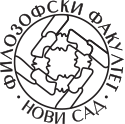AZ ALÁRENDELT NYELV POÉTIKÁJA MINT A KISEBBSÉGI IRODALOM STRATÉGIÁJA
Absztrakt
Az 1920 után kisebbségiként megjelölt irodalmak – mint a szlovákiai magyar, erdélyi magyar, jugoszláviai magyar stb. – egyik legfontosabb igényévé az önmeghatározás vált. Ebből adódóan a kisebbségiként, nemzetiségiként felfogott irodalom egészére kiterjesztve különféle koncepciók jelentették be érvényességüket. A hídszerep, a kisebbségi messianizmus, a sajátos-speciális határon túli, kisebbségiirodalom-koncepciók, vagyis az évtizedeken át tartó ideológiagyártás nyomán a homogénként elképzelt kisebbségi irodalmak koncepcióinak vitájában kevés figyelemben részesült az irodalom nyelve mint olyan poétikák lehetséges terepe, amely az alárendeltség, a transzkulturalitás, a hibriditás, a dialektus és a pluricentrikus nyelvfelfogás határfeszültségeiből teremt érvényes irodalmi nyelvet. A tanulmány nemcsak kortárs határon túli magyar irodalomba tartozó műveket említ ebből a szempontból, mint például Száz Pál Fűje sarjad mezőknek (2017) című phytolegendáriumát, vagy a „székely nyelven” alkotó szerzőket (Sántha Attila, Muszka Sándor), hanem a felmerülő kérdéseket a kortárs magyar irodalom egészére (Parti Nagy Lajos, Borbély Szilárd) is kiterjeszti, és a posztmodern, valamint a transzkulturális irodalomfelfogások perspektíváján keresztül tárgyalja. Ebből a szempontból sajátos nyelvi agglomerációt képviselnek a bilingvális szerzők, mint Macsovszky Péter, vagyis az olyan művek, amelyeket a „nem magyar nyelven írt magyar irodalom” kategóriájába sorolhatunk. A tanulmány íve tehát a dialektustól a nyelvkeveredésen át az idegen nyelv egyeduralmáig mutat – a magyar irodalom kontextusában.
Hivatkozások
Cselényi Béla. 1994. 42. In Marsallbot a hátizsákban: A Forrás harmadik nemzedéke, szerk. Martos Gábor. 289. Kolozsvár: Erdélyi Híradó Könyv- és Lapkiadó.
Deleuze, Gilles – Guattari, Félix. 2009. Kafka: A kisebbségi irodalomért. Ford. Karácsonyi Judit. Budapest: Qadmon.
Gintli Tibor. 2010. A modern és a kortárs magyar irodalom (kb. 1890-től napjainkig). In Magyar irodalom, szerk. Gintli Tibor. 641–852. Budapest: Akadémiai Kiadó.
Grendel Lajos. 2010. A modern magyar irodalom története: Magyar líra és epika a 20. században. Pozsony: Kalligram.
H. Nagy Péter. 2007. Hagyománytörténés: A szlovákiai „magyar líra” paradigmái 1989–2006. Pozsony: AB-ART.
Kulcsár Szabó Ernő. 1994. A magyar irodalom története 1945–1991. 2. kiadás. Budapest: Argumentum.
Muszka Sándor. Sanyi bá (részletek). Irodalmi Jelen december 26. https://irodalmijelen. hu/05242013-1558/sanyi-ba-reszletek (2022. febr. 17.)
Németh Zoltán. 2012. A posztmodern magyar irodalom hármas stratégiája. Pozsony: Kalligram.
Schein Gábor. 2010. A modern és a kortárs magyar irodalom (kb. 1890-től napjainkig). In Magyar irodalom, szerk. Gintli Tibor. 853–1062. Budapest: Akadémiai Kiadó.
Spivak, Gayatri Chakravorty. 1987. In Other Worlds: Essays in Cultural Politics. New York: Methuen.
Száz Pál. 2017. Fűje sarjad mezőknek: Phytolegendárium. Dunaszerdahely–Pozsony: Kalligram.
Szegedy-Maszák Mihály szerk. 2007. A magyar irodalom történetei I–III. Budapest: Gondolat.
Tőzsér Árpád. 2016. A kódváltás pragmatikája (Példaszöveg egy szakdolgozatból). Édes Anyanyelvünk 38 (4): 11.
Vincze Ferenc. 2019. Gyarmatok és gyarmatosítók, avagy az identitás (irodalmi?) színeváltozásai (tépőzárak). Kortárs 63 (3): 52–55.








